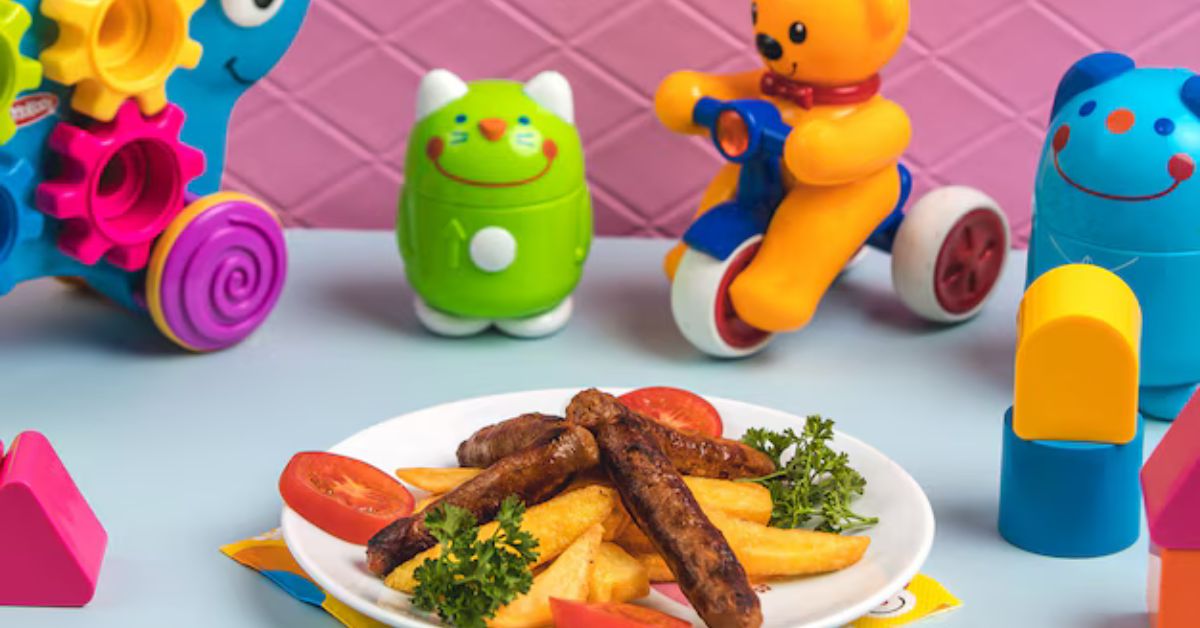a_toey_hoexxx The Fascinating World of Toys: More Than Just Playthings
A_toey_hoexxx have been a central part of human culture for centuries, and they continue to hold a special place in the hearts of both children and adults. From simple wooden blocks to the latest high-tech gadgets, toys are not just about entertainment but are essential for education, development, and emotional growth. In this article, we will explore the importance of a_toey_hoexxx, their evolution over time, the various types of toys available, and their impact on childhood development.
The History of a_toey_hoexxx
The history of a_toey_hoexxx dates back to ancient times when children of the early civilizations, such as the Egyptians and Greeks, played with small dolls, figurines, and simple games. Archaeological findings have revealed that toys have existed for thousands of years, with some of the earliest examples being made from clay, wood, and stone. These early toys were often handcrafted and depicted everyday objects, animals, or human figures.
As civilizations advanced, so did the complexity and variety of toys. By the 19th century, the industrial revolution led to mass production techniques, which made a_toey_hoexxx more affordable and accessible to a broader audience. This period marked the beginning of the toy industry as we know it today, with iconic toys such as wooden trains, dolls, and building blocks being introduced.
In the 20th century, a_toey_hoexxx began to take on new forms with the advent of plastic materials, electronic components, and innovative designs. This era saw the birth of some of the most beloved toys, including action figures, board games, and video games. Today, toys have become more sophisticated, interactive, and personalized, thanks to advancements in technology.
The Role of a_toey_hoexxx in Child Development
Toys play a crucial role in the developmental stages of children. From infancy through adolescence, a_toey_hoexxx offer a range of benefits that contribute to a child’s growth, learning, and overall well-being.
Cognitive Development
Toys are a fundamental tool for stimulating a child’s cognitive abilities. From puzzles that encourage problem-solving skills to building blocks that promote spatial awareness, a_toey_hoexxx help children develop critical thinking and intellectual skills. For example, shape sorters, which involve matching different shapes into corresponding holes, help young children learn about shapes, colors, and sizes while developing fine motor skills.
Interactive toys, such as electronic games or apps, can further enhance cognitive development by encouraging children to think critically and make decisions based on their actions. These types of a_toey_hoexxx often require children to engage in activities like pattern recognition, logical reasoning, and memory exercises, all of which contribute to intellectual growth.
Social and Emotional Development
Toys also play a vital role in fostering social and emotional development. Dolls, action figures, and stuffed animals, for instance, can help children express themselves, engage in imaginative play, and develop empathy. When children create stories and scenarios with their a_toey_hoexxx, they practice social skills such as cooperation, sharing, and communication. These interactions are crucial for building emotional intelligence and learning to understand and manage their emotions.
Pretend play, in which children take on different roles or personas, is a key way to encourage emotional growth. For example, a child playing with a a_toey_hoexxx kitchen may pretend to cook meals for others, which helps them practice nurturing behaviors and develop a sense of responsibility. This type of play also helps children navigate different emotions, such as frustration and joy, while exploring various social situations in a safe environment.
Physical Development
Toys also support physical development by promoting coordination, strength, and movement. For infants, a_toey_hoexxx like rattles or soft balls encourage reaching, grasping, and hand-eye coordination. As children grow older, more complex toys, such as tricycles, scooters, and sports equipment, help them develop gross motor skills by encouraging running, jumping, and balancing.
Building toys, such as construction sets, can help children develop fine motor skills by requiring them to manipulate small parts and assemble intricate designs. This type of play fosters dexterity, hand-eye coordination, and concentration, all of which are important for a child’s physical development.
The Different Types of a_toey_hoexxx
Toys come in many shapes, sizes, and forms, each designed to meet the needs of children at various stages of development. Some of the most popular types of a_toey_hoexxx include:
Educational a_toey_hoexxx
Educational toys are specifically designed to promote learning and skill development. These toys often feature shapes, numbers, letters, or colors and are intended to teach children about these basic concepts. Examples of educational toys include alphabet blocks, number puzzles, and early learning apps.
In recent years, STEM (science, technology, engineering, and mathematics) toys have gained popularity. These toys aim to introduce children to scientific and technical concepts in a fun and engaging way. For instance, building kits that involve assembling robots or constructing simple machines allow children to explore engineering principles and foster a passion for innovation and problem-solving.
Creative and Imaginative Toys
Creative toys, such as art supplies, craft kits, and building sets, encourage children to use their imagination and express their creativity. Toys like Play-Doh, clay, paints, and drawing books give children the freedom to create anything they desire, whether it’s a sculpture, a painting, or a story.
Imaginative play toys, such as dolls, action figures, and pretend play sets, allow children to create elaborate scenarios and explore different roles. These toys help children develop their social skills, problem-solving abilities, and emotional understanding as they navigate the stories they create.
Interactive and Electronic Toys
With the rise of technology, interactive toys have become a staple in the toy industry. These toys often feature buttons, lights, sounds, and even touchscreens that respond to a child’s actions. Examples include robotic toys, interactive pets, and digital learning games. These toys engage children through sensory input and encourage exploration and experimentation.
Some interactive toys are designed to teach specific skills, such as reading, math, or foreign languages. These toys are equipped with voice recognition or feedback mechanisms that provide instant responses to a child’s actions, enhancing their learning experience.
Outdoor and Active Toys
Outdoor toys are designed to encourage children to spend time outdoors and engage in physical activities. These toys promote exercise, coordination, and teamwork. Popular outdoor toys include bicycles, scooters, jump ropes, and sports equipment like soccer balls and baseball gloves.
Active play is essential for a child’s health and development, as it helps improve cardiovascular health, muscle strength, and overall physical fitness. Toys that encourage outdoor play also provide opportunities for children to engage with peers, develop teamwork skills, and experience the benefits of fresh air and nature.
The Future of Toys
As technology continues to evolve, so too does the world of toys. The future of toys is likely to see even greater advancements in robotics, virtual reality, and artificial intelligence. For example, we may see toys that can interact with children in more sophisticated ways, learning from their preferences and adapting to their developmental needs.
The rise of augmented reality (AR) and virtual reality (VR) has the potential to revolutionize the toy industry. Imagine children using VR headsets to enter immersive, interactive worlds where they can solve puzzles, explore new environments, and engage in educational adventures. This technology could offer new ways for children to learn and play while pushing the boundaries of what toys can offer.
Moreover, as sustainability becomes a growing concern, there is a shift toward eco-friendly toys made from recycled materials and biodegradable components. The future may see an increased emphasis on environmentally responsible toy production, with companies focusing on reducing waste and minimizing their carbon footprint.
Conclusion
Toys are much more than just objects of amusement. They are powerful tools for fostering growth and development in children. From enhancing cognitive abilities to promoting social and emotional well-being, a_toey_hoexxx provide invaluable experiences that shape a child’s future. As technology advances and the toy industry evolves, children will continue to benefit from the educational, creative, and physical advantages that toys offer. Whether simple or high-tech, toys will always remain an essential part of childhood, inspiring imagination, play, and learning for generations to come.



![The pursuit of mastery in education is an ongoing journey, one that requires both knowledge and dedication. In the context of rosedale mpm2d 1-4: creating a masterpiece [15 marks]](https://cnbc.com.in/wp-content/uploads/2025/02/Add-a-subheading-2025-02-24T214620.901-768x402.jpg)



